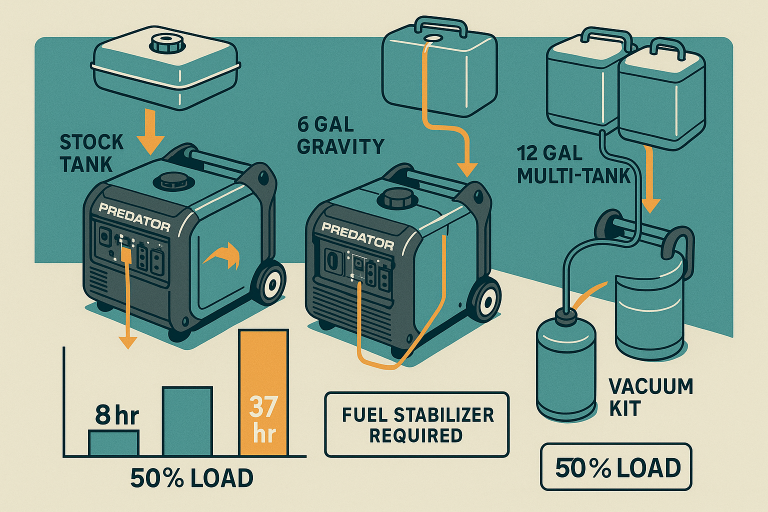What is the typical voltage output of a portable generator?
As a portable generator owner, it’s important to understand the voltage output of your generator. The voltage output of a portable generator refers to the amount of electrical energy that is produced by the generator and is measured in volts. The typical voltage output of a portable generator can vary depending on the size and type of generator. In this article, I’ll discuss the typical voltage output of portable generators and provide some examples of how to properly use a generator’s voltage output.
Step 1: Understand the types of voltage output
The typical voltage output of a portable generator can vary depending on the type of generator. There are two types of voltage output: single-phase and three-phase. Single-phase generators produce electrical energy in one phase and are typically used for powering small appliances and tools. Three-phase generators produce electrical energy in three phases and are typically used for powering larger appliances and equipment.
Step 2: Check the voltage output of your generator
The voltage output of a portable generator can be found in the owner’s manual or on the manufacturer’s website. The voltage output is typically measured in volts.
Step 3: Consider the voltage output when selecting a generator
When selecting a portable generator, it’s important to consider the voltage output and match it to the power requirements of the appliances and equipment you plan to use with the generator. For example, if you plan to use a generator to power a large appliance such as an electric hot water heater, you may need a generator with a higher voltage output.
Step 4: Follow the proper usage guidelines
When using a portable generator, it’s important to follow the proper usage guidelines. This includes ensuring that the generator is located in a well-ventilated area, away from any combustible materials and that the generator is properly grounded. It is also important to use the generator in accordance with the manufacturer’s instructions and guidelines.
Example:
Let’s say you have a portable generator with a voltage output of 120 volts and you want to use it to power a small appliance such as a portable fan.
- In this case, the generator’s voltage output is sufficient to power the small appliance.
Another example:
Let’s say you have a portable generator with a voltage output of 120 volts and you want to use it to power a large appliance such as an electric hot water heater.
- In this case, the generator’s voltage output is not sufficient to power the large appliance and you would need to upgrade to a generator with a higher voltage output.
In conclusion, understanding the typical voltage output of a portable generator is important when selecting and using a generator. The voltage output is measured in volts and can vary depending on the type of generator. It’s important to match the generator’s voltage output to the power requirements of the appliances and equipment you plan to use with the generator. Remember to always follow the manufacturer’s instructions and guidelines when using a portable generator.



